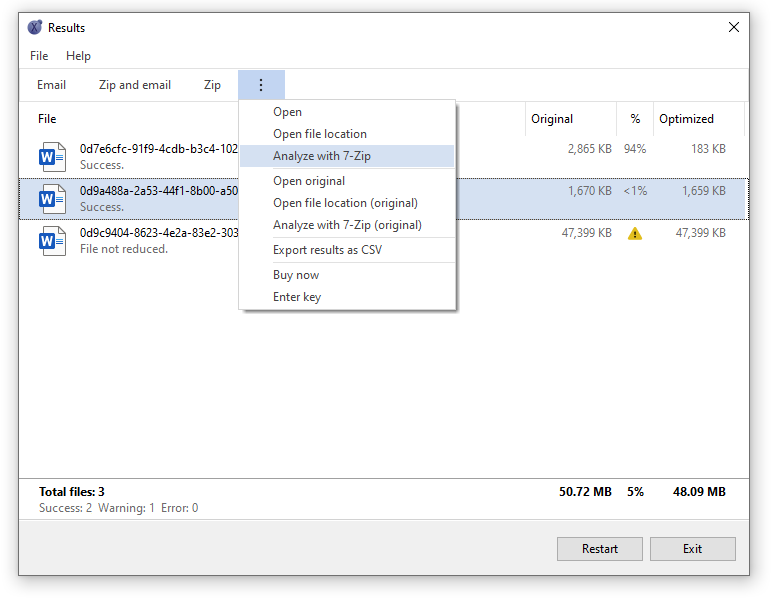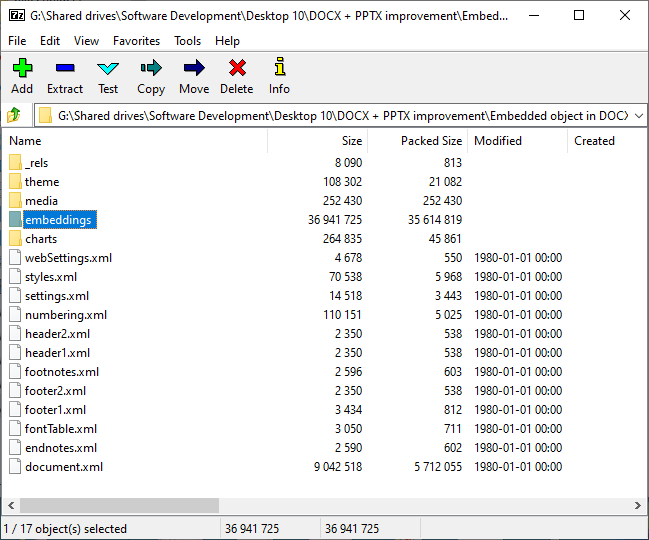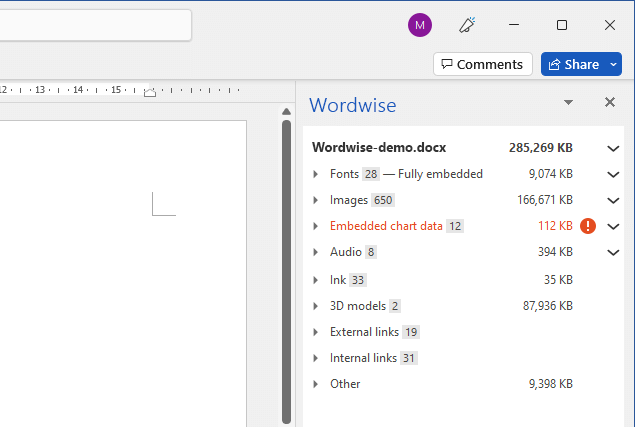Last update: June 8, 2023
See why your DOCX file didn’t reduce
Most likely it will be already optimal, small, or containing media that NXPowerLite cannot/didn’t compress. Below we’ve provided instructions for helping you to find the culprit and some options for fixing it.
Is it already small?
Sizes are listed in KB in NXPowerLite, anything below 1,000 KB (1 MB) is pretty small and should be easily transferred by email. Most email caps have risen to 5 - 10 MB even in restricted scenarios, although there are still some areas where the limits are much tighter.
Optimize profile
If you are using the Balanced optimize profile, then consider trying again with Strong as there are some additional settings in there that are designed to cut even more weight from your files.
Is it still too large for your needs?
To discover what content is making up the file size, you can now look at a breakdown of content inside a file using NXPowerLite.
From the NXPowerLite results screen you can right-click, or click the ellipsis menu (pictured), on any Office file (PPTX, DOCX or XLSX) and choose Analyze with 7-Zip to review the optimized file, or Analyze with 7-Zip (original) for the original file. This will open the file in 7-Zip, allowing you navigate through the contents to quickly see where the heavy media is hiding.
When 7-Zip opens, you will see an Explorer-like view, where you can browse through the folders to see where the large content is lurking. The folders are named for the content they contain.
In this example the bulk of the size is located in the embeddings folder which contains embedded objects.
Jump into a folder to see which individual files are causing the size problem.
Manually compress large media
Once you’ve established exactly what content you still need to reduce inside your file, the links below will take you to our latest advice for fixing each type of media.
Images
Jump to What if the images don’t compress enough? to learn how to tackle grouped images, EMF files and images with artistic effects in Word.
Fonts
Click to open our options for tackling font file sizes in Word.
Embeddings
Click here to read our advice for reducing the size of embedded objects in your Word document.
If you come across anything in a document that is making it too big and you can’t fix it - then please feel free to contact us - we love hearing about new content that is causing size issues in Word.
Should we make a Word Add-in to help with this?
Please can you let us know if you’d be interested in a Word add-in that showed you exactly how big everything in the open Word document was. We have already built something similar for PowerPoint called Slidewise, and we’d love to know if a similar tool for Word would be useful.
It might look something like this — as you can see it would show you the size of fonts, images, charts and other resources in your document.
Register your interest
If you’d be excited to add Wordwise to your toolbox - please can you share your email with us to let us know. If you do we’ll also keep you notified of any progress.



